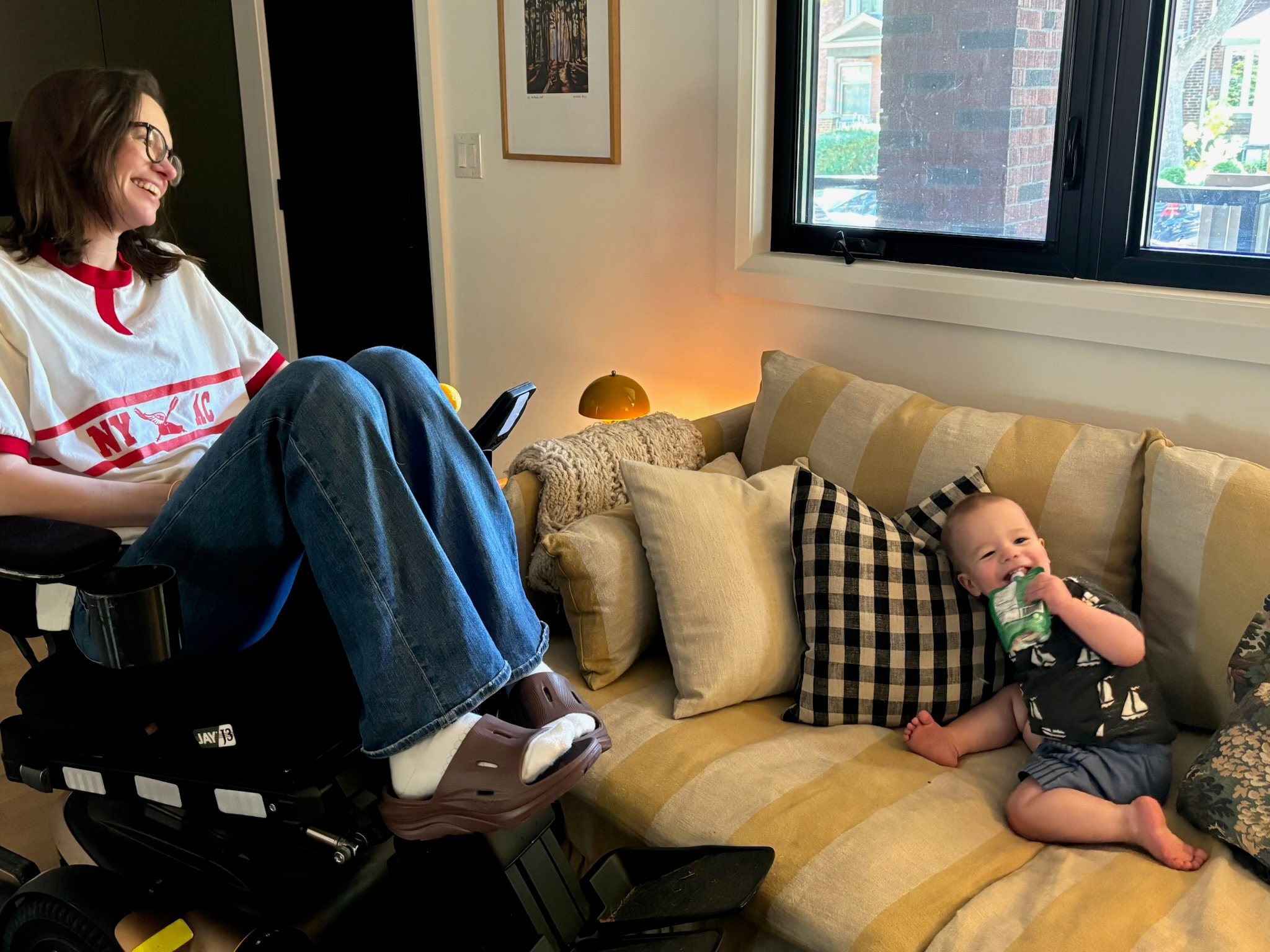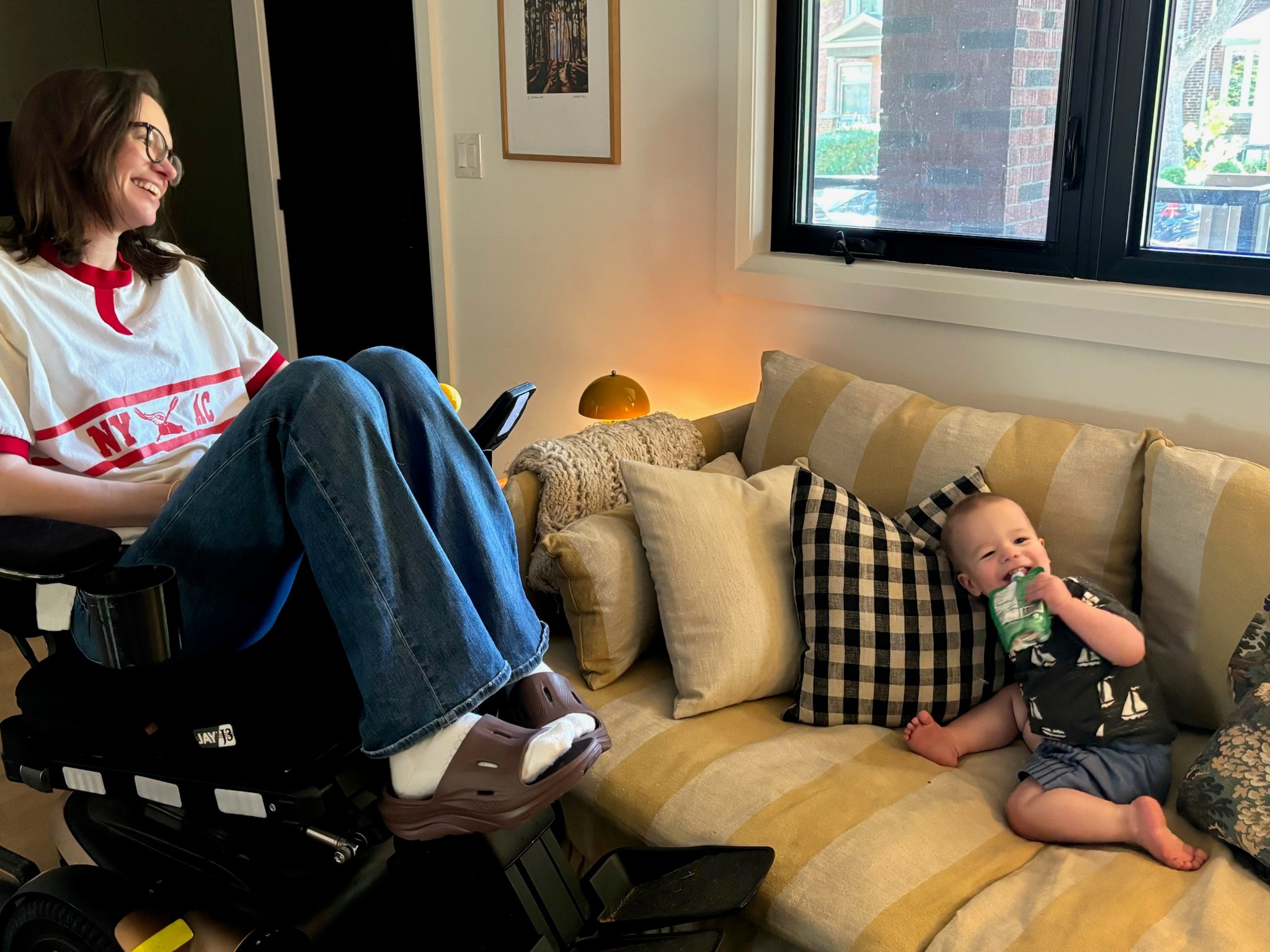
It’s post-nap. My 18-month-old son opens his dresser, takes out one shirt at a time, and places them around the room: a yellow shirt in the corner, the denim oxford on my knee, and a ringer tee on his head. Drawer emptied, I ask him to climb onto my lap, and he plants one dumpling foot on my wheelchair’s frame, then stretches his other up to the cushion behind my shins. He flops his belly on my legs, and I drag him into a sitting position. His 97th percentile-sized head rests against my chest, and he points around the room, counting to five for no reason.
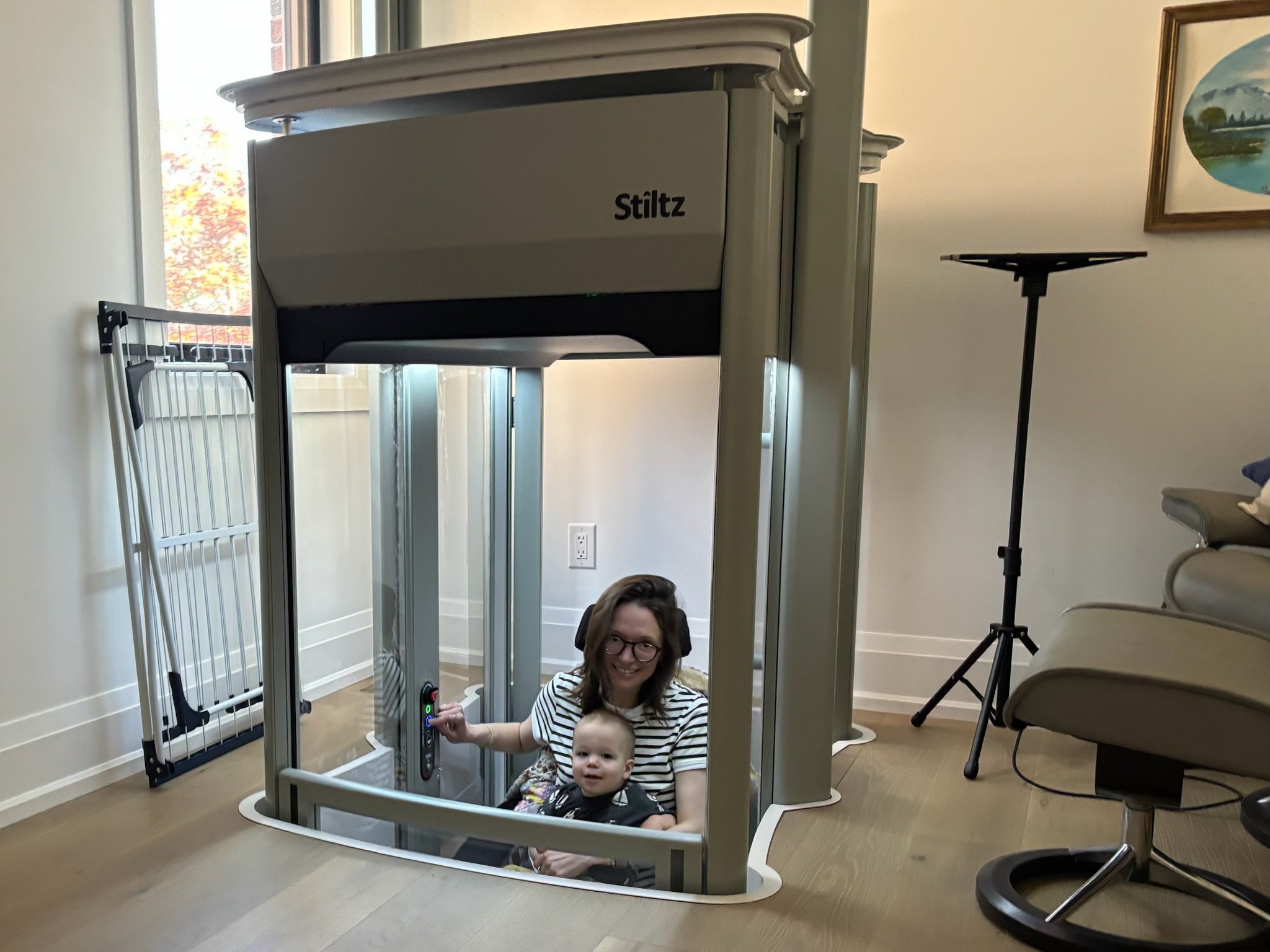
We roll down the hall together and into what we call “the elevator room,” which is also where I record podcast interviews. Our elevator is just large enough for my power wheelchair. I lean forward, swinging open the door, and we back in together. I stretch to close the door and use my right arm to stop him from pressing buttons while I hold the down button with my left. This style of residential elevator only moves while a rider is pressing the button.
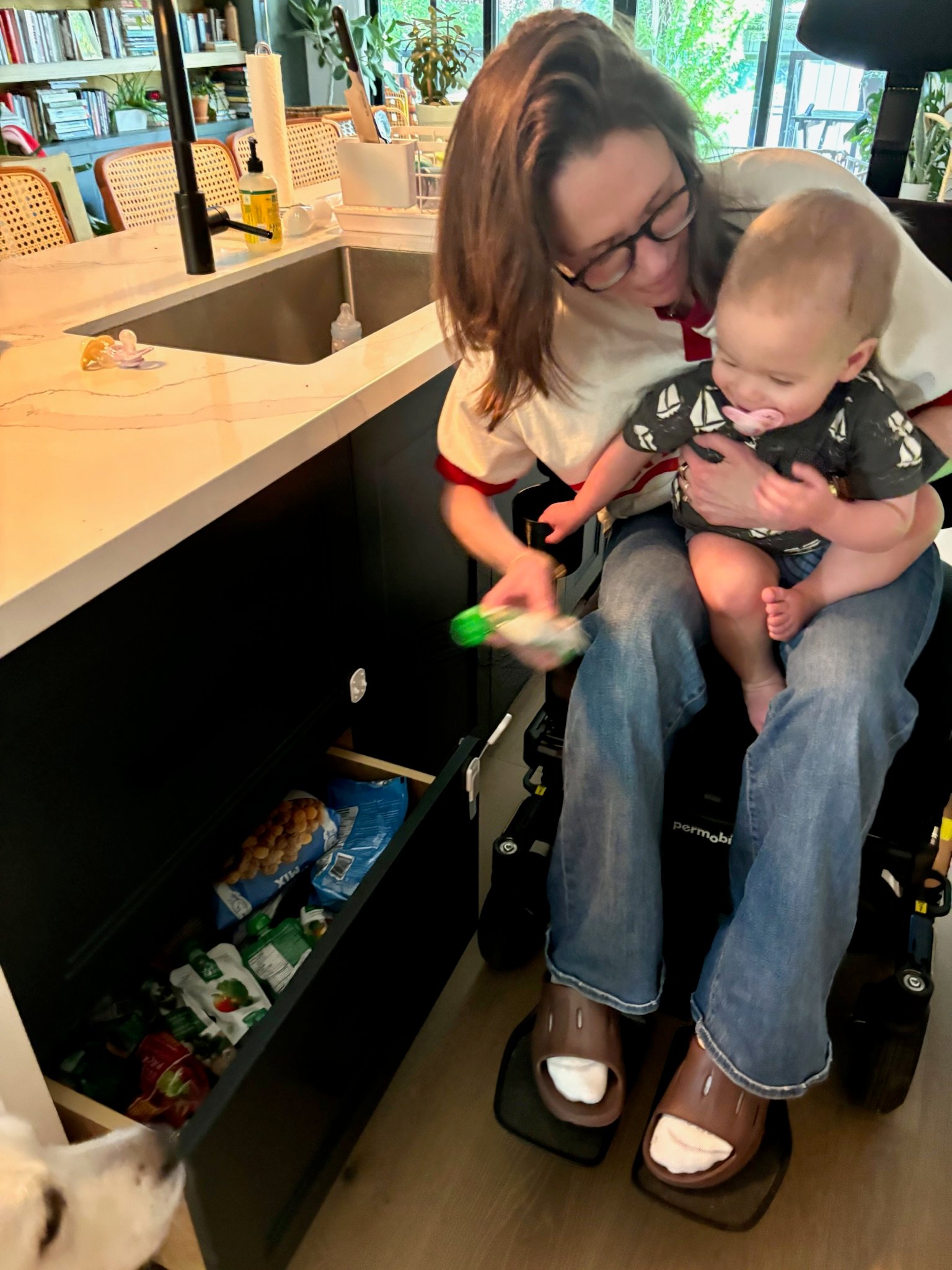
On the ground level, I use my footrests to nudge open the elevator door, and we enter the family room together. We go to the kitchen, fill his bottle with water, and grab a fruit pouch and granola bar. He arches slightly, to show he’s ready to dismount, and I shift my legs so he can slide down them like they’re a piece of playground equipment. I chase him with the snacks, and he flaps his arms, rejecting sustenance. “All done! All done! All done!” he chants.

I watch as he organizes our books. Some on the sofa. Some on my lap. Some by the dog food. He refuses to put down Virginia Woolf. Yesterday it was Salinger. As he reaches for Omar El Akkad, Richard Powers lands hard on his kittenpaw toes. He freezes, stunned by the sensation. He turns to me, eyes welling. And then he’s screaming. I roll to him and lift him to my lap. Instead of facing out, he’s burrowed against me, wet face pressed into my chest. His right hand reaches around to hold my hair. His left hand pets my forearm. His breathing slows down, and I murmur to him, kissing his feather hair.
I’m not sure if you realize it, but this story is a miracle.

I have been disabled for 14 years. I have been living in a house that I can use for the past four months. I recently wrote for The Atlantic (gift link) about why it has been so hard to find accessible housing, and I won’t retell that story now. But the piece concluded with a scene from our life earlier this spring. My son fell and hit his head. He was fine, but because our house at that time didn’t have an elevator, I had to wait for my husband to bring him to me. I have missed so many moments in the nine years I’ve been a mom.
We now live in a century-old brick house in Toronto. The porch is bifurcated by a large metal device, called a VPL, that lifts me, in my wheelchair, from the yard to the front door of the house. It is an eyesore. It is loud. After we moved in, I purchased wooden trellises and planters, and hired someone in the neighborhood to add morning glories, green vines, and lavender to distract from the metal rectangle.
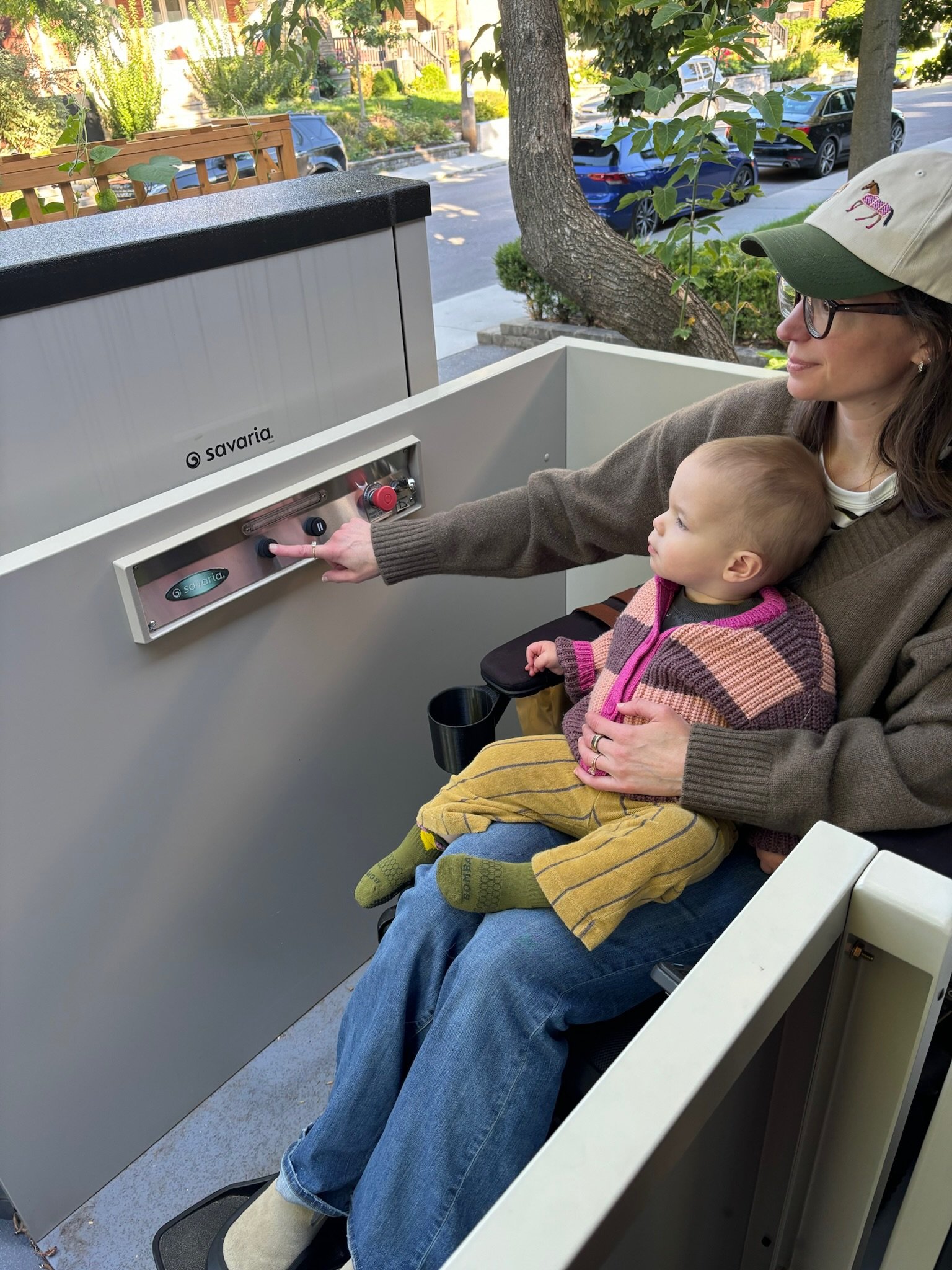
We bought the house in June and spent five weeks working with a fantastic contractor to make it wheelchair accessible. Now, a large elevator box juts into what used to be the dining room in the modestly-sized main level. The backyard used to have space for a swing set; now, it’s mostly a concrete pad and another lift, so I can reach the garage. What was once a guest bedroom is now just an elevator and chair. Sometimes I look around my house with its buttons and rods and grinding elevator gears and I feel ashamed. How dare I alter the entire architecture of a space? Just so I can make my own lunch? So I can wash my own sweaters? So I can be there when my baby drops a book on his toe?
What gall. The house is a physical insistence on my own dignity. The value of my desires. The worth of my presence.
The nature of my disability means that I was sick for years before I even considered accessibility at home. At first, it was because I didn’t have a diagnosis (POTS and EDS), and then because I thought I could get better. After that, I failed to consider that my specific brand of impairment required adaptation. I was sick for seven years before I got a power wheelchair.
An erroneous distinction between illness and disability means that people like me live in houses we can’t use. I can walk. When I stand up out of my chair, I don’t shake or limp. I look nondisabled. But what goes unseen is that after only a few seconds, my vision starts tunneling, and my skin becomes clammy. My hearing warps. That physical stress takes a toll. When we had a house with stairs, I could use them, but only once or twice a day.
I think that ableism and individualism and wellness culture can trick us into thinking that if we can sometimes stand, then the answer isn’t to adapt our environment so that we have to stand less, but instead, to adapt our bodies so we can learn to stand more. In the back (and front) of my mind, I believed that I could heal myself into the use of my own house.
Apart from that, there is the cost of renovation. We were lucky that we could do it (we had set aside money for years).
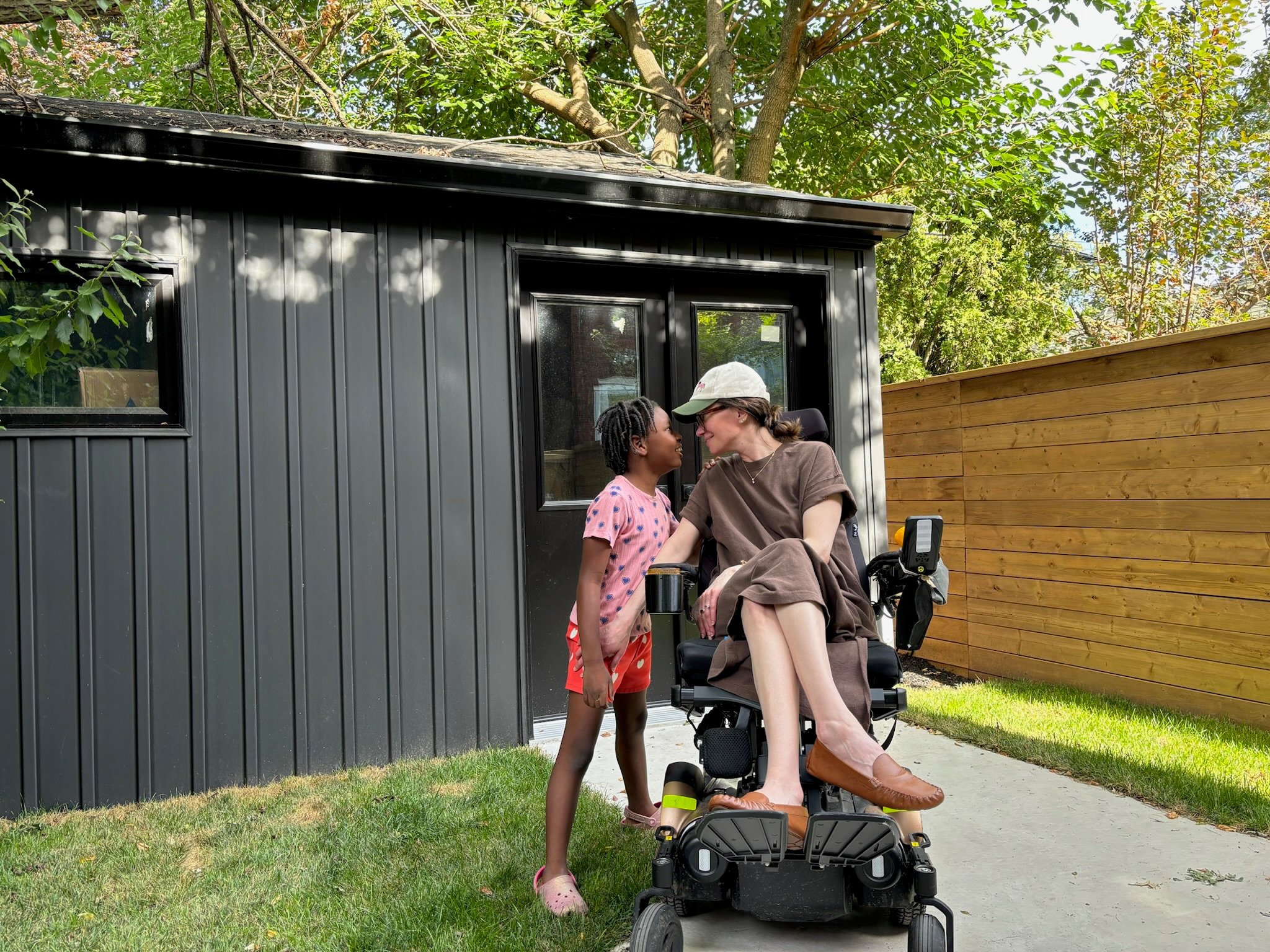
My daughter had camp last week. I’m dizzier in the mornings, so navigating the stairs in time to get her out the door before 9:00 a.m. was always impossible. For years, I did her hair in bed. I hugged her goodbye from my bedroom. But now, I’m waiting at the front door. Rushing her to do one last pee. Rolling around the family room looking for her visor. Making sure her water bottle isn’t leaking.

I’m holding her hand as we walk down the street, and she confesses that she thinks another camper wears a bra. We stop for coffee and a cookie. We share what we remember from the day baby F was born. “I can’t remember a life without him,” she tells me. When we get close to camp, she turns to face me. “Do you think everyone is going to be shocked to see you?” she asks. They aren’t. They don’t know that, thanks to metal gears and plastic doors and holes in the floor and concrete platforms, they are witnessing a miracle.
Jessica Slice is the author of Unfit Parent: A Disabled Mother Challenges an Inaccessible World. Her articles have also appeared in the New York Times, the Washington Post, and Glamour; and she wrote a post for Cup of Jo about what her disability has taught her about parenting. She lives in Toronto with her family.
P.S. More on disability, including dating while disabled and what it feels like to have autism.
44 COMMENTS

